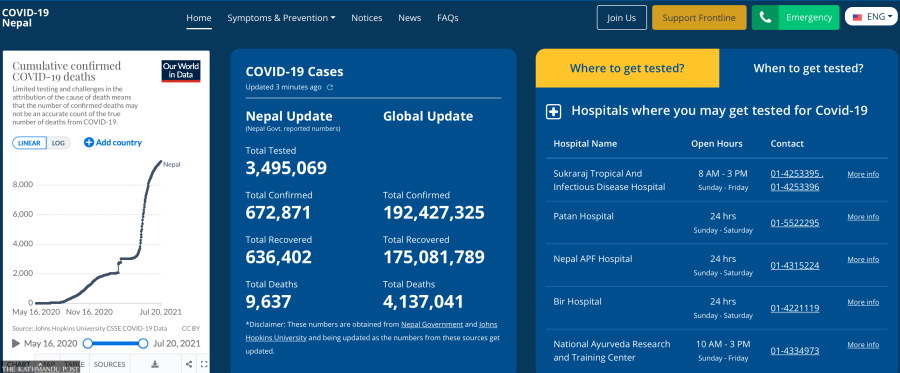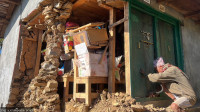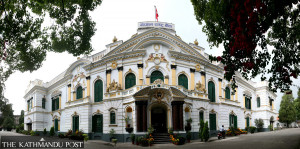Columns
Better data can save more lives
There was a palpable increase in the public appetite for data during the Covid pandemic.
Pranaya Ratna Sthapit
When the second wave of the Covid-19 pandemic was wreaking havoc and hospitals were running out of beds, oxygen and ventilators, like many people, I was making frantic calls and sending messages, resharing contact details about cylinder vendors, medical staff and providers of other resources. Civic tech portals such as covidconnectnp.org were quite helpful in accessing lifesaving information during times of urgency. A common denominator in this support system has been the use of data and technologies that could be a matter of life and death.
Palpable was the increase in public appetite for data during the pandemic. Covidnepal.org was one of the first initiatives to inform people about hospital capacity and the number of persons who tested positive, recovered or died. Others like plasmaconnect.org helped Covid patients seeking convalescent plasma therapy to connect with donors. Similarly, the second wave saw new data driven initiatives such as covidconnectnp.org help save lives by connecting patients with hospital beds, oxygen, ventilators, vehicles and food. Other life-saving initiatives include sharing the latest information about hospital beds by hospitalbedsnepal.com.
The government also showed a readiness to share Covid-related data. Whether it was the press briefing on television every day during the first wave, the use of cross platform group messaging app, the current data portal covid19.mohp.gov.np, or the Hamro Swasthya App, the Ministry of Health and Population played an instrumental role in helping people keep abreast of the latest developments. Other government agencies such as the National Disaster Risk Reduction & Management and the Ministry of Federal Affairs and General Administration have also been sharing useful data on Covid. Institutions like the National Academy of Science and Technology started an initiative to map and share information on innovators and innovations developed to fight the pandemic.
Main challenges
Such information-sharing efforts have been instrumental in helping the public understand the gravity of the situation. However, challenges in data sharing remain. Lack of coordination among various levels of government agencies leading to data inconsistency such as under-reporting of Covid-19 deaths and positive cases has been reported. Asymmetric information from government entities about basic health infrastructure might put lives at risk. Let us take a look at some of the challenges in institutionalising data-sharing and in making better use of data that could save lives and improve health outcomes.
During a pandemic, when health experts and medical equipment are in short supply, sharing real-time relevant data is crucial to respond to the situation quickly. Sharing old or inaccurate data is unhelpful, to say the least, because the window to act upon the data is very small in a rapidly changing environment. During the second wave, the Health Ministry’s platform started sharing real-time data on the number of hospital and intensive care unit (ICU) beds and ventilators available. However, the data captured was not updated frequently, and some data points were inaccurate, making them virtually unusable.
Various initiatives, both government and civil, worked in isolation, and data was stored in different systems, making it difficult to collate information and derive useful insights from it. Lack of standardisation in data collection from local governments on contact tracing, the health status of people in home isolation and symptoms of people made it difficult to assemble information quickly and generate knowledge from it. This created information gaps and increased the likelihood of duplication of effort. As such, connecting data from multiple information systems is key to producing better healthcare experiences for the public. Of course, extra efforts from all parties will be required to bring out initiatives that are locked in silos.
Although various efforts sprung out during the pandemic to share actionable information related to the virus, data also needs to be shared in a machine-readable open format to create alliances and generate meaningful knowledge. Beating this pandemic requires collective efforts, so greater involvement of and collaboration among scientists and experts can only be a welcome development. At a recent conference organised by the National Academy of Science and Technology, one of the presenters showcased her artificial intelligence-related study to identify Covid infections based on X-ray information. But her findings were based on data from outside Nepal. If she could have accessed data from within the country in an open format, her insights could potentially have been used for medical diagnosis. Of course, healthcare data might contain very sensitive as well as personal information, so it is imperative to share it ethically and securely.
Disruptive technologies
People all over the world demand better healthcare facilities and services. They have to be made aware that sharing data ultimately makes service providers more accountable and leads to better healthcare outcomes. To this end, we have to invest in boosting data and digital literacy among Nepalis. As tragic as it may sound, every death during the pandemic due to inadequate healthcare is a missed opportunity.
Although the second wave of infections is starting to subside, many public health experts are issuing warnings of a possible third wave in Nepal. A gradual relaxing of lockdown restrictions, the possibility of deadlier variants, and a very low level of vaccine penetration—only 2.5 percent and 6.1 percent of the population respectively had been fully and partially vaccinated as of June 19, according to ourworldindata.org—have put the elderly and other vulnerable groups at even greater risk. Thus, preparing well for another wave of the virus means creating a robust alliance for sharing timely and accurate data, and using disruptive technologies.




 12.12°C Kathmandu
12.12°C Kathmandu















